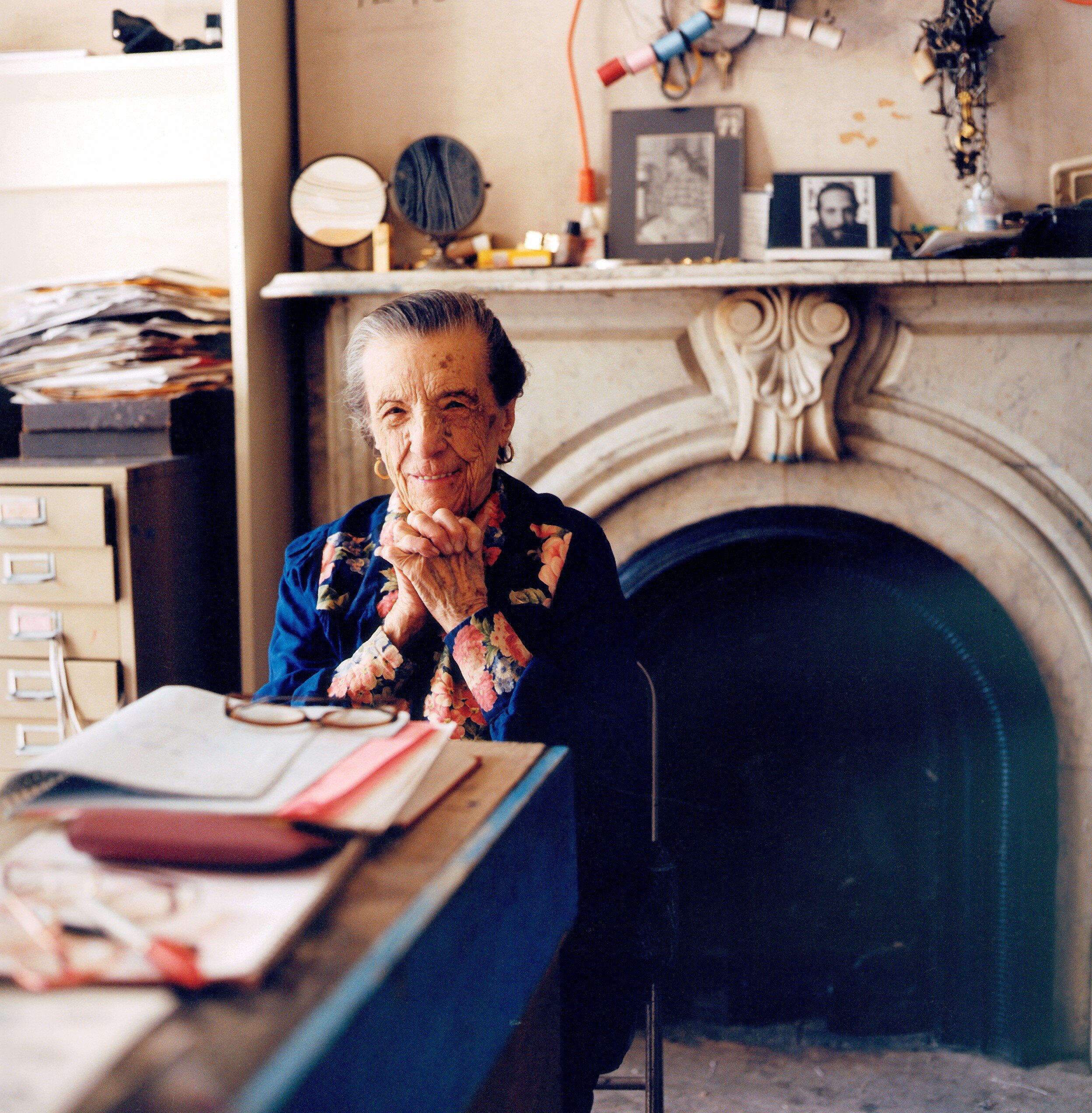The Groove Issue 40 - The Power of Rituals
Welcome to the 40th issue of The Groove.
If you are new to The Groove, read our intro here. If you want to read past issues, you can do so here.
If somebody forwarded you this email, please subscribe here, to get The Groove in your inbox every Tuesday.
THE POWER OF RITUALS
People tend to believe that routines are boring, that they keep you in an uncreative rut. The opposite is true. The myth is that creative people are different, that they have a crazy and unpredictable lifestyle, an alternate reality every day. But that's not accurate.
Ideas need certain structure to flourish. Note that I say “structure” and not “rigidity.” Creativity is built incrementally by practicing small habits or following daily routines, or even having an occasional ritual when starting something new.
Do The Same Thing Every Day
Louise Bourgeois photographed by her assistant, Jean-François Jaussaud, in her Chelsea apartment in 2000. She was always surrounded by her notebooks and diaries.
To stick to a routine, you have to find something you love doing and that doesn’t feel like a chore.
The extraordinary French-American artist Louise Bourgeois, wrote every day in her journals. Her thoughts, activities, and experiences served as a memory bank of ideas.
Bourgeois also kept three types of diaries. She described these as: “The written, the spoken (into a tape recorder), and my drawing diary, which is the most important. Having these diaries means that I keep my house in order.” She wrote and drew in those diaries until her last days, before dying at the age of 98 in 2010.
Chris Ofili at the Studio Museum in Harlem during the installation of "Afro Muses 1995-2005," his show of the watercolors he did privately for years.
In 2005, British artist Chris Ofili had a spectacular solo exhibition at the Studio Museum in Harlem. Afro Muses showed 181 watercolors of men and women’s heads wearing an intricately detailed kaleidoscope of African outfits and adornments, with different hairstyles and expressions. They all had the same the width and height, but each subject was distinctive and special.
That exhibition was a delight to the eyes. Watercolor is a very quick medium, but his were particularly detailed. Then I read in The New York Times that he had been painting between one and ten watercolors a day for nearly 10 years, mostly to keep for himself. He had thousands of them, and this exhibition was just a tiny selection.
It would take him between 5 and 15 minutes to make each one, while in parallel he created his large paintings. Watercoloring became his anchor, his daily ritual. He said “Sometimes, I will return to the watercolors in the evening. And that's a completely different atmosphere. If things haven't gone well during the day, I can calm down.”
Invent Your Own
The iconic covers of some of the editions of A Clockwork Orange.
Anthony Burgess, the genius who wrote A Clockwork Orange, was obsessed with dictionaries and consulted them every day. To the point that after his death in 1993, people who worked in his foundation found part of a manuscript for a slang dictionary that the prolific author had began working on more than 50 years before the discovery.
When he felt stuck or out of ideas, he devised a ritualistic way to get his creative juices flowing when writing about a dull object. He opened a random page and challenged himself to use the words in it to create his description. I think this is not only a fantastic way to keep the brain engaged but I’ve also tried it myself and it’s a hell of a lot of fun.
The 80-20 Rule
Think about the 80-20 rule. 80% of the time, it’s quite helpful to stick to a routine or to follow a ritual, 20% of the time, it’s better to roam around free to spice things up.
When Warren Buffet arrives to work at the Berkshire Hathaway offices, most of his time is spent reading. “I just sit in my office and read all day.” He estimates that 80% of his daily work routine is spent on reading materials ranging from financial statements, journals and business reports to newspapers and books.
While teaching an investing class at Columbia Business School, Buffet held up a stack of paper and said, “Read 500 pages like this every day,” in response to a question about how to prepare for success in investment. “That’s how knowledge works. It builds up, like compound interest. All of you can do it, but I guarantee not many of you will do it.”
You may not have the freedom, time, or attention span to read 500 pages a day like Buffet suggests but picking up a form of meditation - literal or metaphorical - like journaling was for Bourgeois, or watercoloring is for Ofili, is a feasible 15-minute daily ritual that can pay you back with dividends.
Quick reminder that my creativity for business masterclass has a new evergreen format and is now open for enrollment. This is a proven program that delivers great results, as past participants attest, and the only course you’ll ever need to take your ideas to the next level. As most of the previous members say: “the value of this course far outweighs the price, there’s nothing like it out there.”
Thank you for reading this far. Looking forward to hearing from you anytime.
There are no affiliate links in this email. Everything that I recommend is done freely.
If you liked what you read here, invite a friend to subscribe here.
THE EXTRA GROOVE
Read:
Daily Rituals: How Artists Work by Mason Currie
Louise Bourgeois: An Unfolding Portrait by Deborah Wye
The Power of Ritual: Turning Everyday Activities into Soulful Practices by Casper ter Kuile
Watch:
Louise Bourgeois - Spiderwoman, a BBC documentary
Routines: The Unexpected Power of Habits, Practices, and Rituals | Jan Stanley | TEDxBeloit



